
Sustainability in horticulture
How Sustainable is Horticulture in the Netherlands?
Sustainability in the Netherlands is a hot topic these days. From the materials used in packaging at your local snack bar to recycling cans, and even the electric cars and scooters that nearly catch you off guard on the road because you’ve once again failed to notice them in time. But it’s not just that; the high gas prices we faced in 2022 got people thinking. The demand for solar panels and heat pumps skyrocketed, all in a bid to escape those soaring energy bills.
In horticulture, too, sustainability has been a crucial subject for years. From relatively small things like the use of organic pesticides to harnessing geothermal energy to heat the greenhouse and installing solar panels – these are just a few examples of the many sustainable innovations applied in horticulture. But what measures are Decorum growers taking to enhance sustainability in their greenhouses? In brief:
- Mother Nature’s Energy
- Water reuse
- Material reuse
- Biological Pest Control
- Pets in the Nursery
- Certification
The earth is what we all have in common
Wendell Berry
Mother Nature’s Energy
With sustainability in mind, we eagerly harness the natural power of the earth. Our growers are heavily investing in solar panels for power supply. To heat the greenhouse, we often utilize geothermal energy or connect to a district heating network. This means that on some farms, the boiler is completely turned off, and no gas is used. Thanks to these sustainable initiatives, combined with the use of LED lighting and greenhouse modifications to retain heat, many growers can cultivate energy-neutrally. In the future, an increasingly large portion of our energy will be generated sustainably. Additionally, we like to give back to nature. For instance, one of our growers has their own beehives, while others keep sheep along the greenhouse, eliminating the need for mowing and saving energy!
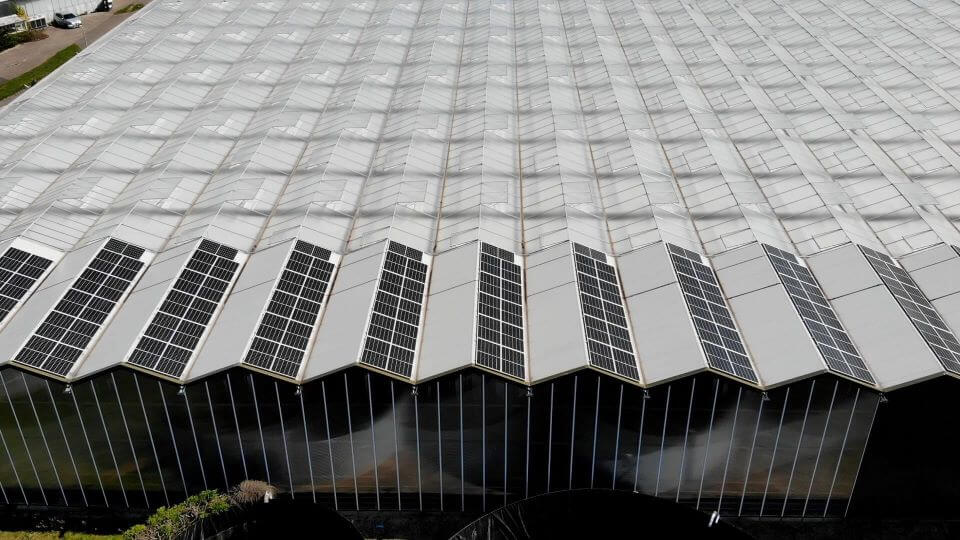
Water Reuse
Netherlands, the land of water
Our little country always had an abundance of water, but in recent years, it’s become scarcer and, as a result, more vital. This holds true for our growers as well because without water, our plants and flowers won’t thrive. We’ve invested significantly in sustainability, including innovative solutions for water storage and reuse within our nurseries. We have, for example, ebb and flow floors. Growers can allow a layer of water to cover these floors, and when the plants have had enough to drink, they can release the water, allowing it to be reused. We also collect rainwater from the greenhouse roofs in large storage basins. The water used in the nursery is rigorously treated according to strict standards, and many growers store it for future use.
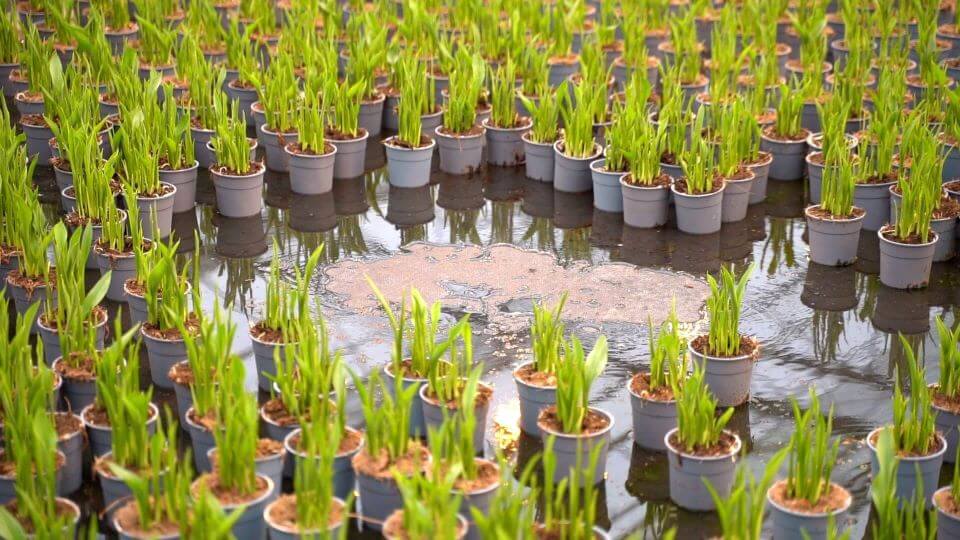
Material Reuse
Taking care of the world around us
We strive to reuse materials in a sustainable manner within the nursery. Decorum grower Gova is a prime example of this. This laurel grower recycles their pruning waste and turns it into useful products like soap, hand sanitizer, tea, and candy. Other growers reuse their plant pots several times. After a good wash (using that recycled water), they can be used again. Recycled PET bottles are used to make these pots. These are just a few examples of what our growers recycle.
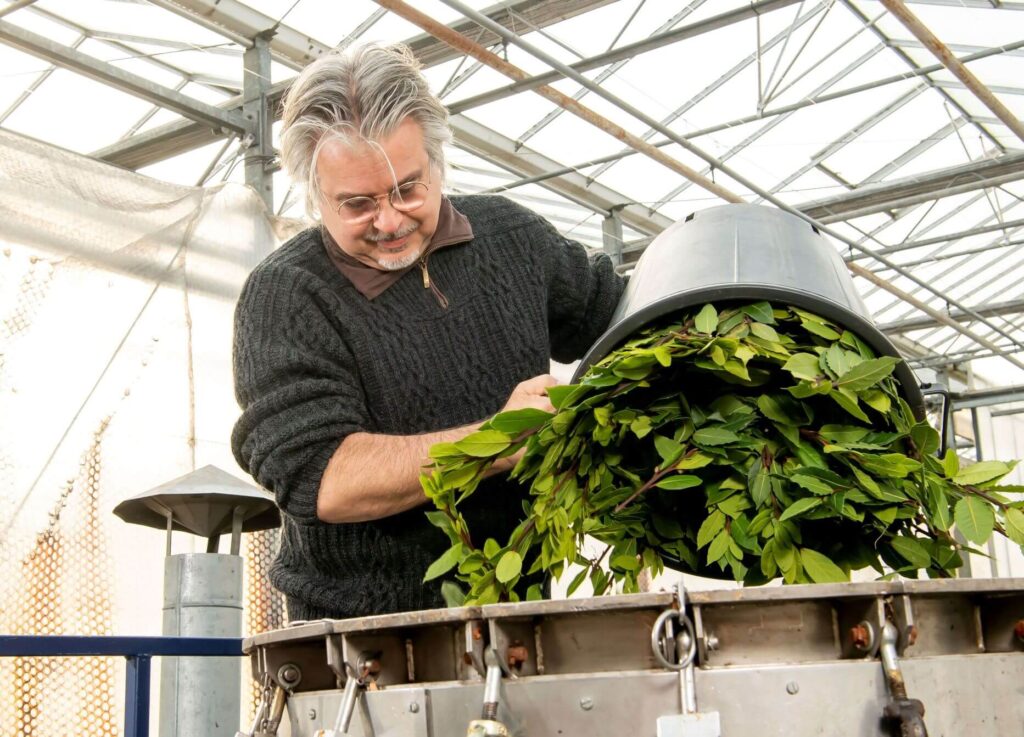
Biological Pest Control
Biological Pest Control: Every little creature helps
Growers also have to deal with pests that can affect the quality of plants and flowers. Naturally, we don’t want that. That’s why we use biological control agents. These can be nematodes, flies, ladybugs, or other insects. Many of our biological control agents are nearly invisible to the naked eye, but they do invaluable work! Sometimes, a control agent might remain on one of our products, and it can help protect your plants or flowers from intruders at home!
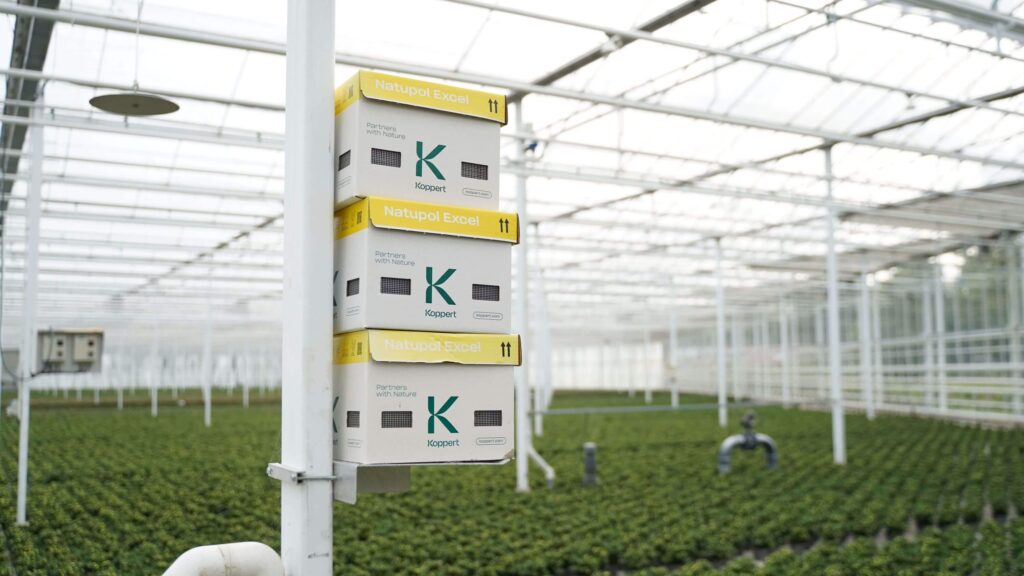
Pets in the Nursery
Pets in the nursery, really?
Not only small control agents are welcome in our greenhouses; many of our nurseries have pets – some even have a whole troop of them. Cats are employed to catch mice, while chickens help weed and catch flies, mosquitoes, and moths. If you walk into Howea Palms nursery at Hartog Palmen, you’ll hear cheerful chirping – those are the quails specially hired to catch a specific type of moth. And many nurseries have dogs that give you a warm welcome. The scent of a dog keeps unwelcome guests away. Beyond their practical utility, it’s just plain enjoyable to have these animals in the nursery.
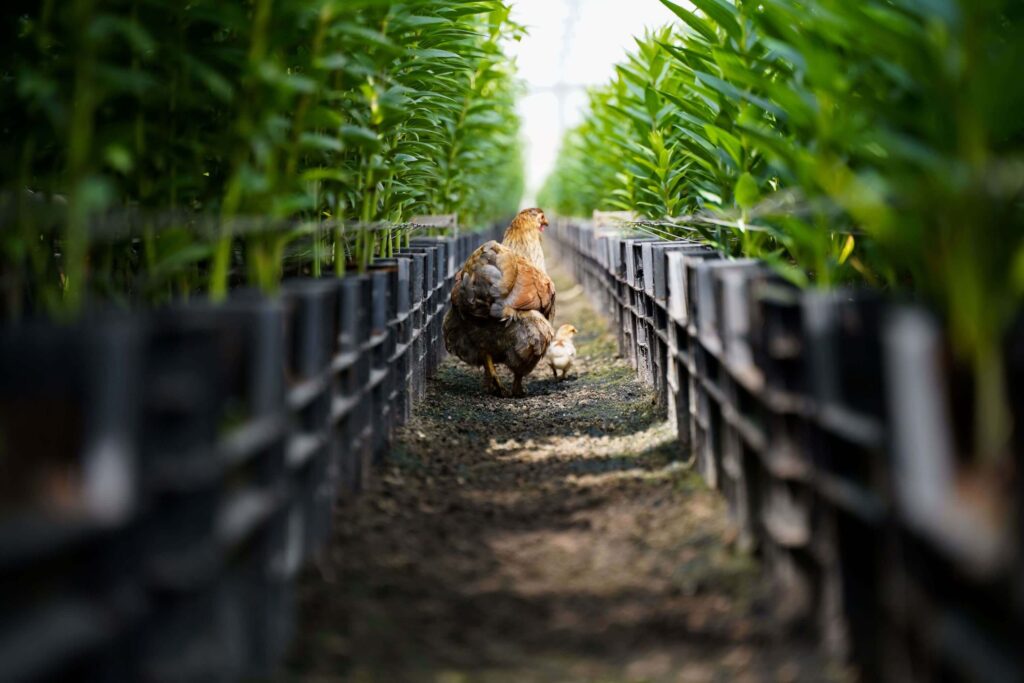
Certification
n addition to all these sustainable solutions, we also place great importance on our growers being able to demonstrate their commitment to horticultural sustainability through sustainability certificates.
What sustainable innovations do you embrace?
Our growers contribute in various ways to the sustainability of their greenhouses. These measures can be highly visible, such as the use of LED lighting in the greenhouse, but also less conspicuous applications like geothermal energy or biological pesticides.
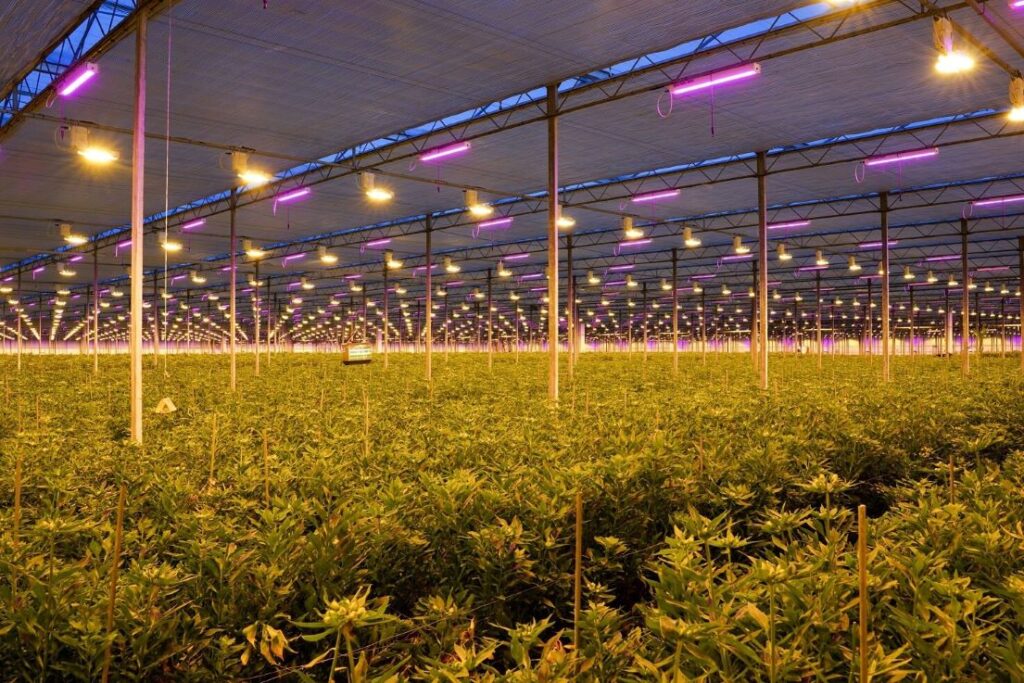
Have you ever noticed that during the dark months of the year, the sky above the greenhouses in the Westland region is turning more purple than orange? This is the result of transitioning from traditional gas discharge lamps to energy-efficient LED lighting.
Have you ever thought about how you can make a positive contribution to sustainability? 🌱💡 Discover which sustainable innovations and measures you can embrace to actively participate in the development of a sustainable Netherlands!

